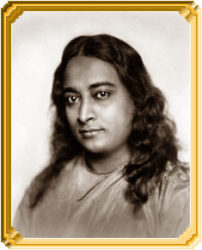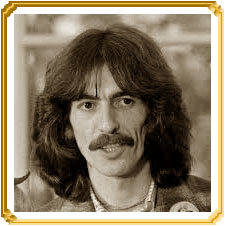
100 Years of a New Dispensation
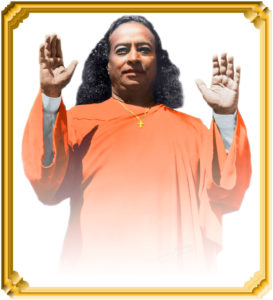
An avatar with a sacred mission
100 years ago, in 1920, Paramhansa Yogananda first stepped on Western soil. It was a step of major importance – a step which would have a lasting impact for countless truth seekers and for the spiritual landscape of the West.
Unapparent to all, this small man (1.70m or 5.7ft) was a towering soul, a saint of the highest degree. “I came liberated,” he says on a recording. This means that he was an avatar, one who had incarnated as a pure instrument of God. The Shankaracharya (most important spiritual representative in India) of Kanchipuram realized who he was: “As a bright light shining in the midst of darkness, so was Yogananda’s presence in this world. Such a great soul comes on earth only rarely, when there is a real need among men.”
What was that need? He was invested by his gurus with a world-changing mission: to spread Kriya Yoga and to demonstrate the unity of “original Christianity” as taught by Jesus Christ and “original Yoga” as taught by Krishna.
Jesus, he explained, had been a master “in the use of Kriya or a similar technique.”*
Kriya Yoga was known “to Christ, St. John, St. Paul, and other disciples.”* (All quotes marked * are from the Autobiography of a Yogi.)
In India it was taught by Krishna, who “gave it, millenniums ago, to Arjuna.”* But the ancient technique “had been lost in the Dark Ages”*
Jesus Christ and the immortal Mahavatar Babaji, who “planned the spiritual technique of salvation for this age [Dwapara Yuga],”* sent Yogananda to the West in order to revive Kriya Yoga.
His task was to spearhead that divine dispensation. Babaji had told him:
“Kriya Yoga, the scientific technique of God-realization, will ultimately spread in all lands, and aid in harmonizing the nations through man’s personal, transcendental perception of the Infinite Father.”*
But who was Yogananda? And what of his character, his personality, his nature?
His two dominant sides
Usually, when considering Yogananda, we concentrate on his immense love, his soul-beauty, his God-devotion, his inspiring wisdom and, most certainly, his lovable sweetness. Isn’t that how he is generally perceived?
Many people, therefore, upon hearing Yogananda’s voice for the first time on a recording, are quite taken aback, sometimes even shocked: what they hear is not the gentle and soothing voice they had expected, but the mighty roar of a spiritual warrior. Isn’t this true?
In fact, Yogananda’s character has two notable sides: one is that of the ecstatic bhakti, the devotional lover of God, which he expressed, for example, in his book Whispers From Eternity. The other is that of the powerful warrior. This aspect of his nature is often overlooked and the world is little aware of it. Yet to all direct disciples, as Swami Kriyananda reports, his powerful nature was evident: “He was lovable, certainly – utterly so. Yet he was also the very personification of power!”** (All quotes marked ** are from Conversations With Yogananda by Swami Kriyananda.
Power is inextricably a part of what it means to be a saint. Power and divine love are opposite sides of the same coin. Power, in other words, is an aspect of God which all saints manifest. This is why often they are feared and persecuted.
Earlier incarnations as a victorious conqueror
Both characteristics, “devotional and loving” and “extraordinarily powerful” expressed themselves in varying proportions during Yogananda”˜s past lives: his devotional side found expression as “a hermit”, “a poet”**, and “a yogi amidst the Himalayan snows”, the latter being an incarnation he remembered even as a small boy.*
In other lifetimes, his forceful warrior side was dominant. He told his disciples that indeed he had been a victorious conqueror several times, each time with a crucial historic mission on our planet:
- He was Arjuna, the hero of the war of Kurukshetra, thousands of years ago in India.
- He was William the Conqueror (1028-1087), the first Norman King of England. In that life, he explained, he had been given a divine commission. It was more religious than political: to bring England out of the Scandinavian sphere and under the influence of Roman Christianity.
- And he was a military commander in Spain, conquering the invading Muslims, defending Christianity.
Concerning earlier incarnations, Yogananda had stated, in his early Lessons, that Babaji, Lahiri Mahasaya and Sri Yukteswar were the three wise men who came to visit the Christ child in the manger. Swami Kriyananda asked him the logical question, which is doubly understandable from a direct disciple: “Sir, were you Jesus Christ?” “What difference would it make?” the Master replied. “The ocean of spirit is the Reality.”**
Frequently, however, he spoke of his techniques as the “Second Coming of Christ” – an event which doesn’t occur outwardly, but inwardly, in one’s expanded consciousness.
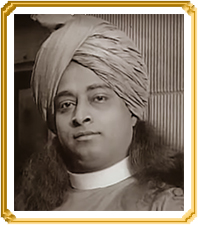 At any rate, in this incarnation as Paramhansa Yogananda (1893-1952), he manifested the two qualities we discussed above: he was a “Premavatar”, whose divine love radiated from him like a sun. At the same time the difficult global mission with which he was commissioned by Mahavatar Babaji required the expansive spirit, strength and vision of a conqueror: to take Christianity back to its original roots of inner God-communion though Kriya Yoga.
At any rate, in this incarnation as Paramhansa Yogananda (1893-1952), he manifested the two qualities we discussed above: he was a “Premavatar”, whose divine love radiated from him like a sun. At the same time the difficult global mission with which he was commissioned by Mahavatar Babaji required the expansive spirit, strength and vision of a conqueror: to take Christianity back to its original roots of inner God-communion though Kriya Yoga.
His challenging dispensation
He was well aware that, in this lifetime, his conquest would be far from easy, having to face a restless, extroverted and worldly Western society. It was a daunting task indeed: “As I went about my preparations to leave Master and my native land for the unknown shores of America, I experienced not a little trepidation. I had heard many stories about the materialistic Western atmosphere, one very different from the spiritual background of India, pervaded with the centuried aura of saints. “An Oriental teacher who will dare the Western airs,’ I thought, “must be hardy beyond the trials of any Himalayan cold!'”*
For ten years his guru, Sri Yukteswar, had carefully prepared him for this herculean task. When Yogananda received an invitation to address the Congress of Religious Liberals in America, he asked his guru: “Shall I go?” The wise sage knew that the great moment had finally come: “All doors are open for you. It is now or never.”*
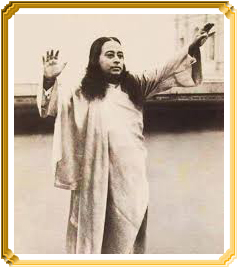 The levitating saint, Bhaduri Mahasaya, had also wisely encouraged him to go and to wield the most valiant “weapon” during his yogic venture: “Son, go to America. Take the dignity of hoary India for your shield. Victory is written on your brow; the noble distant people will well receive you.”*
The levitating saint, Bhaduri Mahasaya, had also wisely encouraged him to go and to wield the most valiant “weapon” during his yogic venture: “Son, go to America. Take the dignity of hoary India for your shield. Victory is written on your brow; the noble distant people will well receive you.”*
Yogananda’s conquest started 100 years ago. On 19 September 1920, his ship, The City of Sparta, docked near Boston. On that golden day, the great Master entered the Western world. About two weeks later, on October 6 1920, he addressed the Congress of Religious Liberals in Boston on “The Science of Religion”. In this maiden speech, he emphasized the universality of religion, the need for personal verification and realization and the truth that God is bliss.
He writes: “It was well received; I sighed in relief.”* But his spiritual adventure had only barely begun.
The spiritual conquest begins
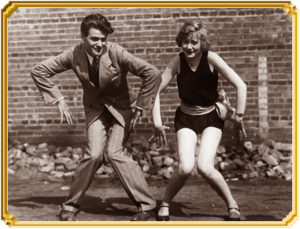 To understand his situation, imagine the picture of American society in 1920. Think of the “Roarin’ Twenties” with their restless Jazz music, their jittery atmosphere, their daring fashion (the “flapper”), and its thoroughly materialistic mindset.
To understand his situation, imagine the picture of American society in 1920. Think of the “Roarin’ Twenties” with their restless Jazz music, their jittery atmosphere, their daring fashion (the “flapper”), and its thoroughly materialistic mindset.
In those days, nobody knew anything about yoga, meditation, pranayama, gurus, kundalini and the like. People instead were caught up in a whirlwind of a flourishing economy with amazing technological innovations such as cars, radio and airplanes. For many middle-class Americans, the 1920s was a decade of unprecedented prosperity. Rising earnings generated increased consumption, entertainment and leisure. Silent movies were in vogue, celebrities were born, sports were exciting, everything was buzzing, vibrating and “roaring”.
It was at that historic moment, in the conservative city of Boston, that Yogananda first stepped on Western soil, entering America’s bustling culture.
Sri Yukteswar had insisted that he should become a graduate: “Someday you will go to the West. Its people will lend ears more receptive to India’s ancient wisdom if the strange Hindu teacher has a university degree.”*
A mission with formidable obstacles
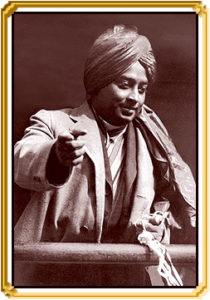 Even with his degree, Yogananda was mightily strange for the Western audience: he kept his hair long and was sometimes ridiculed for it, or asked if he was a man or a woman.
Even with his degree, Yogananda was mightily strange for the Western audience: he kept his hair long and was sometimes ridiculed for it, or asked if he was a man or a woman.
Often he wore a turban, the only one in town.
Most of all, he was dark-skinned. His skin tone definitively mattered: it was a time when people of color were still subject to major discrimination in the USA. In 1920, racial intolerance affected every aspect of their lives. Yogananda, too, had to suffer it: his dark-brown skin was sometimes mistaken for “diluted” African.
The white supremacists were especially annoyed by him as he showed himself to be infinitely superior to them. To other people, his bold and outspoken spiritual message was disturbing and menacing.
Religionists weren’t happy with him either because he highlighted the inadequacy of their dogmas. Once in a train an orthodox minister, incensed at the presence of an orange-robed “heathen” and perturbed because he wouldn’t endorse certain of his narrow dogmas, shouted at him, “You will go to hell!” Yogananda, seeing the anger etched on the man’s face, replied affably, “Well, I may get there by and by, but my friend, you are there already!” The passengers in the carriage responded with delighted laughter. Still, most traditional ministers and priests were certainly opposed to the empirical yogic message Yogananda had brought from India.
Yogananda challenged them boldly: “Your beliefs won’t save you!”# (All quotes marked # are from The Essence of Self-Realization by Swami Kriyananda.)
He explained: “Religionists should learn above all to test their beliefs, just as science does.”# Of course, such teaching didn’t sit well with many.
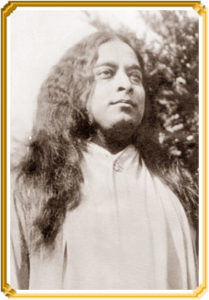 In addition, Yogananda didn’t have a high opinion of the press as it can destroy lives and reputations for the sake of a little notoriety. In 1928, he even wrote a long article in his East-West Magazine entitled “Spiritualizing the Newspapers”. His first sentence uses Biblical words: “Blessed are those who do not indulge in sensational news.” He then affirms: “Of all social crimes, the crime of press distortion and giving prominence to scandals is of the most unfathomable harm to the rising world generation.” Again, many journalists certainly didn’t welcome such a fearless, bold and frank accusation.
In addition, Yogananda didn’t have a high opinion of the press as it can destroy lives and reputations for the sake of a little notoriety. In 1928, he even wrote a long article in his East-West Magazine entitled “Spiritualizing the Newspapers”. His first sentence uses Biblical words: “Blessed are those who do not indulge in sensational news.” He then affirms: “Of all social crimes, the crime of press distortion and giving prominence to scandals is of the most unfathomable harm to the rising world generation.” Again, many journalists certainly didn’t welcome such a fearless, bold and frank accusation.
For all these reasons, his major success is nothing short of miraculous. In that unfavorable situation, the young Yogananda, just 27 years of age, with his shining personality and spiritual power, started his “campaigns” to conquer America.
It was undoubtedly a tough proposition. His worst moment must have been in Miami, Florida, when he was thrown out of town. The local press even stated that “his life was threatened by a delegation of indignant citizens.” Yogananda called it “my crucifixion.
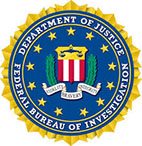 He was even put on a government watch list and kept under surveillance by the FBI and by British authorities, who were concerned about the growing independence movement in India. A confidential file was kept on him from 1926-1937, due to concern over his religious and moral practices.
He was even put on a government watch list and kept under surveillance by the FBI and by British authorities, who were concerned about the growing independence movement in India. A confidential file was kept on him from 1926-1937, due to concern over his religious and moral practices.
Fortunately, however, America is an open society, curious, innovative, and has, by and large, a deeply spiritual heart. Consequently, Yogananda did start to conquer that young culture with his universal message of the three-fold healing of body, mind and soul, and of meditation and Kriya Yoga, as he courageously toured from city to city.
Yogananda the spiritual Conqueror
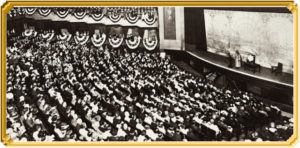 Thousands flocked to his lectures. It was unheard of for a spiritual speaker to attract such numbers. He filled the largest halls in America such as the Carnegie Hall in New York and the Philharmonic Auditorium in Los Angeles. Imagine a crowd of 5000 people listening to him in Washington, D.C. He was taking America by storm.
Thousands flocked to his lectures. It was unheard of for a spiritual speaker to attract such numbers. He filled the largest halls in America such as the Carnegie Hall in New York and the Philharmonic Auditorium in Los Angeles. Imagine a crowd of 5000 people listening to him in Washington, D.C. He was taking America by storm.
Self-Realization Fellowship (SRF), the organization he founded, states that he personally initiated 100,000 seekers into the techniques of the Kriya Yoga path. It had a considerable impact on American society. Nonetheless, all of this, as he wrote, was only the tiniest beginning of an oceanic movement: “The blessed role of Kriya Yoga in the West has hardly more than just begun.”*
He explained his long-term vision: hundreds of thousands of Kriya Yogis are needed to bring into manifestation a world of peace.
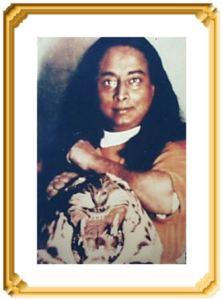 Yogananda’s message echoed the ancient Vedic precepts: “Each man is a part of the Creator, or Cosmic Man”* and in essence “is an all-pervading spirit,”* created by God as “a soul, dowered with individuality.”* Our goal is to find that true Self, our soul. Yogananda’s main teaching, therefore, was “Self-realization“.
Yogananda’s message echoed the ancient Vedic precepts: “Each man is a part of the Creator, or Cosmic Man”* and in essence “is an all-pervading spirit,”* created by God as “a soul, dowered with individuality.”* Our goal is to find that true Self, our soul. Yogananda’s main teaching, therefore, was “Self-realization“.
He taught that the path to this was inner silence, achieved by daily meditation, applying the proper techniques to still the ever-restless mind. He explained: “Silence is the altar of Spirit”# and “Where motion ceases, God begins.”#
Two other great yogis had come to America before him, offering the ancient wisdom of India: Swami Vivekananda and Swami Rama Tirtha. Both of them, however, had stayed for just a few years. Yogananda, on the other hand, dedicated his entire adult life – over 30 years – to spreading the yogic message throughout the West. He broke the ice, so to speak, for Yoga in the USA. That is why the renowned scholar David Frawley described him as “the father of Yoga in the West.”
He urged the crowds to meditate and to experience truth personally, telling them: “Ever-new Joy is God,”* and “ever-new joy is evidence of His existence.”* It was an utterly new approach to God, who, he explained, lived in the very depth of our being. This, he told the world, had been the authentic message of Jesus: “Behold, the kingdom of God is within you” (Luke 17, 21). Likewise, it is the true message of Krishna in the Bhagavad Gita (18, 61): “The Lord is lodged in the heart of all beings.”
He was charismatic, fearless and powerful, being fully aware of the divinity of his mission. In 1932 he wrote a message to his Yogoda students: “You know that hidden in the Yogoda Lessons is the highway to Self-Realization, through which all by-paths of religious beliefs must pass to reach the abode of Infinite Bliss. In Yogoda lies the Second Coming of Christ; that is, through these five, once lost but now found again, techniques of Self-Realization from the Christian Bible, the theology-clogged cup of consciousness of the people will be clarified, and the Omnipresent Christ-Consciousness, so long shut out, will get in, to rest forever. Whosoever shall enlarge his consciousness by meditation and concentration, will be able to receive and perceive Him; and whosoever will comprehend Spirit in his enlarged consciousness will be a Son of God. Realize that Christ-Consciousness, your Savior, is already come a second time, knocking at the doors of your consciousness. Through constant practice of Yogoda, you open the doors of your consciousness and let Him in.”
Many were the conquered souls
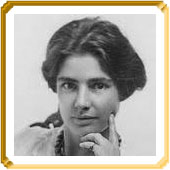 Many celebrities (see Paramhansa Yogananda, A Biography, by Swami Kriyananda) took notice and became interested, such as Clara Clemens, the daughter of Mark Twain, who became his student.
Many celebrities (see Paramhansa Yogananda, A Biography, by Swami Kriyananda) took notice and became interested, such as Clara Clemens, the daughter of Mark Twain, who became his student.
On Nov. 10, 1929, Yogananda met the important New Thought author Ralph Waldo Trine at Mount Washington.
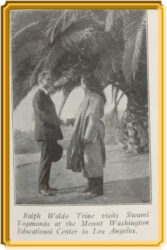
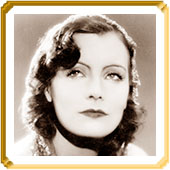 Greta Garbo visited him at his Encinitas hermitage.
Greta Garbo visited him at his Encinitas hermitage.
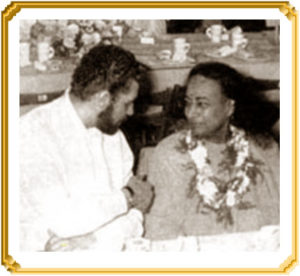 Herb Jeffries, the famous actor and singer, became a friend and student of Yogananda. Here the star is sitting with the Master during his last birthday, on Jan. 5, 1952.
Herb Jeffries, the famous actor and singer, became a friend and student of Yogananda. Here the star is sitting with the Master during his last birthday, on Jan. 5, 1952.
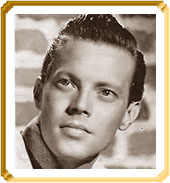 Dick Haymes, also a well-known actor and singer in the ’40s and ’50s, became a Kriya Yogi. He was present at the moment of his mahasamadhi (conscious passing).
Dick Haymes, also a well-known actor and singer in the ’40s and ’50s, became a Kriya Yogi. He was present at the moment of his mahasamadhi (conscious passing).
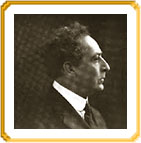 Oscar Saenger was a well-known singer whose funeral Yogananda conducted in 1929.
Oscar Saenger was a well-known singer whose funeral Yogananda conducted in 1929.
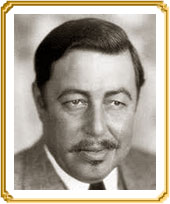 Warner Oland, the famous Hollywood actor, was known to be a rather dour man. Here is the story of their first meeting, retold: Yogananda found himself seated opposite him on a train journey. The actor gave the Master a look of disgust, then turned away. “Excuse me,” the Master said, “why are you wearing that expression?” “None of your business!” replied the other, rudely. “Forgive me, but it is my business,” Yogananda answered. “I have to sit here and look at you! It would be much pleasanter if the expression you wore were not so sour.” “You seem to be a very audacious sort of person,” Oland commented with a laugh. “Who are you?” “That’s just the thing!” Yogananda replied. “We have a great opportunity before us today. You know, everyone in the world is a little bit crazy, but no one gets to find out about his own craziness because he mixes only with people whose craziness is of the same kind as his own. I know about your kind of craziness, because I’ve seen you on the screen, but you don’t know about mine. If you can convince me that your way of life is better, then I will become a movie actor. But if I can convince you that my way is better, you ought to follow me.” “Well, he agreed to my terms, and we talked everything out. And’s I never became a movie actor, but he did become my student!” (See the recorded talk Lake Shrine Dedication).
Warner Oland, the famous Hollywood actor, was known to be a rather dour man. Here is the story of their first meeting, retold: Yogananda found himself seated opposite him on a train journey. The actor gave the Master a look of disgust, then turned away. “Excuse me,” the Master said, “why are you wearing that expression?” “None of your business!” replied the other, rudely. “Forgive me, but it is my business,” Yogananda answered. “I have to sit here and look at you! It would be much pleasanter if the expression you wore were not so sour.” “You seem to be a very audacious sort of person,” Oland commented with a laugh. “Who are you?” “That’s just the thing!” Yogananda replied. “We have a great opportunity before us today. You know, everyone in the world is a little bit crazy, but no one gets to find out about his own craziness because he mixes only with people whose craziness is of the same kind as his own. I know about your kind of craziness, because I’ve seen you on the screen, but you don’t know about mine. If you can convince me that your way of life is better, then I will become a movie actor. But if I can convince you that my way is better, you ought to follow me.” “Well, he agreed to my terms, and we talked everything out. And’s I never became a movie actor, but he did become my student!” (See the recorded talk Lake Shrine Dedication).
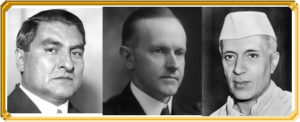 In 1927 US President Coolidge invited Yogananda to the White House. Has any other Yoga-Master ever received that honor? He was actually received by three Presidents: Calvin Coolidge of the USA; President Portes Gil of Mexico; and Prime Minister Nehru of India.
In 1927 US President Coolidge invited Yogananda to the White House. Has any other Yoga-Master ever received that honor? He was actually received by three Presidents: Calvin Coolidge of the USA; President Portes Gil of Mexico; and Prime Minister Nehru of India.
This shows his enormous expansive drive. He was no hermit or secluded monk, but a charismatic, magnetic, outgoing Master. His spirit was indeed that of a spiritual conqueror, who inspired the masses, setting hearts afire everywhere. His powerful “campaigns” were greatly successful in the West. Part of his success was surely that he didn’t speak from dry theory, but from his own blissful 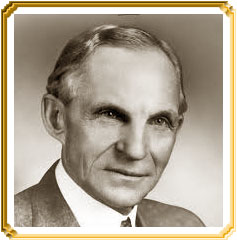 experience, which he exuded with an irresistible magnetism. It touched and transformed people everywhere.
experience, which he exuded with an irresistible magnetism. It touched and transformed people everywhere.
From America’s business world, great CEOs became interested in his teachings. Yogananda was, for example, in contact with Henry Ford, whom he asked to sponsor his first World-Brotherhood Colony. Such Colonies were part of Yogananda’s written Aims and Ideals.
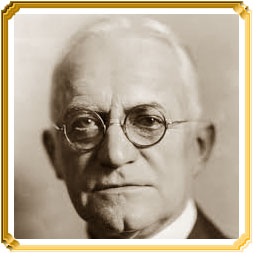 George Eastman, the founder of Kodak, “was a personal friend of mine.” (East-West, Oct. 1934)
George Eastman, the founder of Kodak, “was a personal friend of mine.” (East-West, Oct. 1934)
In the recorded talk Lake Shrine Dedication Yogananda tells the story of another CEO: “When I met Alvin Hunsicker [President of Standard Textile Company], had said “˜I’m disgustingly healthy, I’m disgustingly wealthy.’ But I said, “˜You are not disgustingly happy!’ And I won him. He became a disciple of the order.”
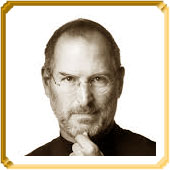 More recently, Steve Jobs was known to have had just one book on his iPad: The Autobiography of a Yogi, which he read once a year, and which he left, significantly, as his good-bye gift to 500 guests during his memorial service.
More recently, Steve Jobs was known to have had just one book on his iPad: The Autobiography of a Yogi, which he read once a year, and which he left, significantly, as his good-bye gift to 500 guests during his memorial service.
Today it would be amusing to hear Yogananda speak with Elon Musk, who has said “Do I think that there’s some sort of master-intelligence architecting all of this stuff [creation]? I think probably not, because then you have to say: Where does the master-intelligence come from? So, it sort of begs the question.”
Yogananda had answered his question long ago: “Many ask that question. Because they live in the realm of causation, they imagine that nothing can exist without a cause. God, however, the Supreme Cause, is beyond causation. It is not necessary that He, in turn, have a creator. How could the Absolute depend for Its creation on another Absolute?”# Elon, listen!
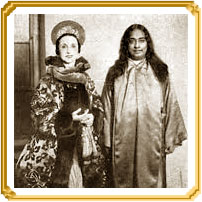 Great artists, such as Amelita Galli-Curci, the famous opera star, and Vladimir Rosing, who directed the American Opera Company, began to study under Yogananda. Leopold Stokowski, the famous conductor, became his devout follower. Yogananda wrote: “In India, music as well as painting and drama is considered a divine art.”*
Great artists, such as Amelita Galli-Curci, the famous opera star, and Vladimir Rosing, who directed the American Opera Company, began to study under Yogananda. Leopold Stokowski, the famous conductor, became his devout follower. Yogananda wrote: “In India, music as well as painting and drama is considered a divine art.”*
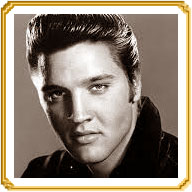
Later Elvis Presley became interested in his teachings, as did the Beatles: George Harrison was known to have regularly gifted the Autobiography of a Yogi.
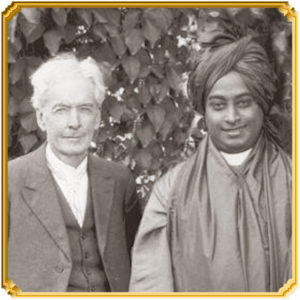 Also scientists, such as Luther Burbank, to whom Yogananda dedicated his Autobiography of a Yogi, became his dedicated students. University professors came to meet him. Yogananda told them how science and spirituality share underlying principles.
Also scientists, such as Luther Burbank, to whom Yogananda dedicated his Autobiography of a Yogi, became his dedicated students. University professors came to meet him. Yogananda told them how science and spirituality share underlying principles.
There were many other celebrities who were in contact with Yogananda: Walter Y. Evans-Wentz, an anthropologist and writer, who authored Tibet’s Great Yogi, Milarepa and wrote the preface to Autobiography of a Yogi; Grant Duff Douglas Ainslie, a Scottish poet and author; George Liebling, a pianist-composer; Luigi von Kunits, the founding conductor of the New Symphony Orchestra of Toronto, Canada; Maria Carreras, the famous pianist; R.J. Cromie, the owner-publisher of the “Vancouver Sun”; Jan Paderewski, a pianist who had also been the second prime minister of Poland and a signatory for the Treaty of Versailles; Ruth St. Denis, modern dance pioneer; and Harry Lauder, the Scottish poet and singer.
Perhaps it was for this reason that the Los Angeles Times called Yogananda “the 20th century’s first superstar guru”.
His song of victory
Let us for a moment imagine “Yogananda the spiritual Conqueror” crisscrossing America, singing aloud one of his Cosmic Chants, Swami Rama Tirtha’s Song, and expressing the full power of his determination, conquest and victory.
Here are the lyrics. Please listen to the song on YouTube as you visualize him in a bright light of conquest.
None can tone [down] me, say who would injure me?
The world stands aside to make room for me.
I come, O blazing Light! The shadows must flee.
Hail, O ye ocean, divide up and part!
Or parched up and scorched up, be dried up, depart!
None can tone me, say who would injure me?
Beware, O ye mountains! Stand not in my way.
Your ribs will be shattered and tattered today!
Friends and couns’lors, pray waste not your breath,
Take up my orders, devour up ye death!
None can tone me, say who would injure me?
I ride on the tempest, astride on the gale.
My gun is the lightning, my shots never fail.
I chase as a huntsman, I eat as I seize
The trees and the mountains, the land and the seas.
None can tone me, say who would injure me?
I hitch to my chariot the fates and the gods;
In the voice of thunder, proclaim it abroad!
Howl, O ye winds! Blow, bugles, blow free!
Liberty! Liberty! Liberty! Om!
Completing his spiritual conquest
Tirelessly Yogananda toured, wrote and taught. Everywhere America was slowly waking up to the ancient science of Yoga.
What makes Yogananda particularly remarkable is not only that he was the first guru to come to live in the West, or that he won the attention of many celebrities, but that he set an incredibly high bar for spirituality, spreading its practices with great success. It is easy to flood the Western world with, for example, a physically-oriented style of Hatha yoga. It is relatively easy to spread a “pop-spirituality”. But Yogananda came with the loftiest teaching and wisdom of ancient India. The goal of life, he told the world during his nationwide “campaigns”, was to find God, or Cosmic Consciousness. Undauntedly, he also introduced the sacred guru-disciple relationship, which had been completely unknown before.
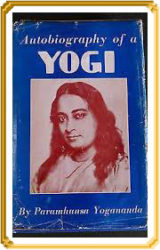 Six years before his passing, in 1946, he published his Autobiography of a Yogi. This book did everything else needed to conquer the West. Millions have read it. There is no-one in the spiritual world who doesn’t know it. Thomas Mann, the Nobel laureate, praised it. Many seekers found their own path through that book. SRF stated in 2006 that every year they sell about 50.000 copies. This is an amazing number. Ananda, too, sells thousands of copies in various continents (the original edition). There are many other spiritual autobiographies but only one Autobiography of a Yogi, which stands out from the rest. It will probably do so for centuries. It will be, as Yogananda stated, “my messenger”.
Six years before his passing, in 1946, he published his Autobiography of a Yogi. This book did everything else needed to conquer the West. Millions have read it. There is no-one in the spiritual world who doesn’t know it. Thomas Mann, the Nobel laureate, praised it. Many seekers found their own path through that book. SRF stated in 2006 that every year they sell about 50.000 copies. This is an amazing number. Ananda, too, sells thousands of copies in various continents (the original edition). There are many other spiritual autobiographies but only one Autobiography of a Yogi, which stands out from the rest. It will probably do so for centuries. It will be, as Yogananda stated, “my messenger”.
The universal Master
Part of Yogananda’s outstanding success was his world-openness. During his life there were no uniforms in his ashrams. Also, renunciants and householders happily shared responsibilities. He ran cafes. He opened a school in his early years in America. He invited the governor of California to his functions. He loved nature and traveling. Common people can relate to all of that. He was an innovator, a musician, a poet, an author, reaching people on many different levels.
Most importantly, Yogananda was a truly universal Master, teaching timeless and unifying principles: he knew that the more open, inclusive and non-sectarian a message, the farther it will travel in our new age.
A revolutionary Dwapara-organization
He knew that a structure for his message was needed; an organization. “God is the Honey, organizations are the hives; both are necessary.”* Therefore, he founded Self-Realization Fellowship (SRF). His ideas of a Kriya Yoga organization are truly enlightening, progressive and different from most others.
He described his intentions in his Praecepta Lessons: “Self-Realization Fellowship is not a sect, but offers a technique by which you can calm the body and the mind. To become a member, it is not necessary to change your religion. What is necessary is to establish a fellowship of all religions and to find out the quickest route that leads to God. We do not try to monopolize Truth. Do you see the beauty of that? If you are the follower of Truth, you are God’s child.”
Oh yes, dear spiritual Conqueror, we do, indeed, see the beauty of that!
In other words, the beauty is that one can follow any religion and still be a part of SRF. The beauty also is that it is “not a sect”, which sees itself as separate from everyone else. Instead, Yogananda’s organization aimed at the very opposite: to be all-inclusive, without ever trying to “monopolize Truth.” He explained: “Self-Realization Fellowship emphasizes the fellowship of religions, not for empty theological discussions, but to get together and find the highway of Self-Realization wherein the bypaths of all beliefs meet.”
The great beauty lies in the intention to “get together“, to unite at that central point where all religions meet: in inner Self-realization, achieved through spiritual practices. Yogananda therefore called his Churches a “Church of All Religions”. It is a revolutionary, futuristic and inspiring concept: a unifying Church in which all churches and religions are welcome, respected and invited, building an active fellowship among them.
Of course, in our modern times, such a beautiful, free, non-sectarian and expansive approach attracts millions of enthusiastic adherents. Yogananda was enthusiastic about it and described his inclusive vision on the final page of his Autobiography of a Yogi (1946): “We shall arrange here for many conferences and Congresses of Religion, inviting delegates from all lands. Flags of the nations will hang in our halls. Diminutive temples will be built over the grounds, dedicated to the world’s principal religions.”*
His is a true Dwapara Yuga vision for religious organizations. In fact, modern people love universal principles, but easily feel uncomfortable when, like in olden times, any one Church-institution is centrally emphasized.
In short: Yogananda was riding the waves of this modern era, which is the only way to become a conqueror of the world’s heart.
Kriya Yoga
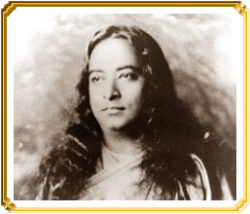 When it comes to receiving the sacred initiation into Kriya Yoga, this beautiful universal spirit was maintained, but a spiritual requirement was added. Yogananda, like Lahiri Mahasaya, gave Kriya to “those of every faith,”* and of every Christian denomination. Kriya is a “creedless teaching.”* He didn’t require Kriya applicants to renounce any tie with other spiritual organizations. However, discipleship was required, which gives the true power to the Kriya technique.
When it comes to receiving the sacred initiation into Kriya Yoga, this beautiful universal spirit was maintained, but a spiritual requirement was added. Yogananda, like Lahiri Mahasaya, gave Kriya to “those of every faith,”* and of every Christian denomination. Kriya is a “creedless teaching.”* He didn’t require Kriya applicants to renounce any tie with other spiritual organizations. However, discipleship was required, which gives the true power to the Kriya technique.
Swami Kriyananda, who for a time was SRF’s main Kriya teacher, used an example: “Yogananda gave Kriya to ‘Mother Gloria’, Mrs. Clarence Gasque, who was the head of the Mazdaznan organization [a neo-Zoroastrian religion]. I was present at that initiation. He was saying that Kriya is for everybody. They just have to be ready for it. It’s important for them to accept this line of Gurus.”
In that same initiation the Master told an important story, explaining how he insisted that a seeker of a different path take Kriya: “I once met a man in India who had been following the path of devotion for twenty years. I could see that, because of his devotion and sincerity, he was ready for an experience of God. But his devotional path had not given him that experience. He needed Kriya Yoga. He wouldn’t accept it from me, however. He insisted on being loyal, as he thought, to his own path to God. ‘It isn’t a question,’ I explained, ‘of changing your path to God. Kriya Yoga will guide you toward fulfillment in your path of devotion. But you are like a man who has lived for twenty years in a room, trying to get out through the walls, the ceiling, the floor. What I am offering to do, simply, is show you where the door is.’ Well, finally he relented and took Kriya initiation. Within a week he had the experience of God that he’d been seeking those twenty years. Kriya Yoga takes you onto the universal highway, where all by-paths of spiritual practice meet.”
Members of SRF (pronam!) today, when reading all of this, will vigorously shake their heads: “This is absolute nonsense: every Kriya-applicant is asked to pledge loyalty to Self-Realization Fellowship, as their ‘path to God’. Our SRF Lessons state it clearly: ‘These sacred teachings constitute the formal religion of students who make Self- Realization Fellowship their Church.’ No affiliation with another church is permitted for a kriyaban (Kriya Yogi). We are our own Church.”
How can that be? Was, perhaps, what the spiritual Conqueror had written in his Praecepta Lessons a grave mistake? “Through these teachings you will learn how to hear the voice of God ‘s how to contact God. Then you will understand your own religion better. Only know the Truth, which alone can make you free ‘s not your religion or church affiliations.”
One can find many similar non-sectarian statements by Yogananda, concerning his mission and work. Here is a shining example from his Inner Culture Magazine, 1942: “When we walk in city lanes we are fenced in by walls, but when we are riding in an airplane, all those barriers disappear; one undivided vastness greets our eyes. So as we walk in the city of theological beliefs, our vision is walled in by dogmatic limitations. But now Self-Realization Fellowship offers the religionists of America and the world an opportunity to ride aloft in the airship of a Church of All Religions, and to get the vision of vast brotherhood of all peoples, and oneness in the worship of our one Father God.”
Early on, in 1926, Yogananda made his mission clear: “Yogoda is not a new religion, nor a new cult, nor a new interpretation; it aims to teach the practical methods, the exact technique of widening the channel of human consciousness, so that truth might flow in ceaselessly, endlessly, without obstructions of dogma or unproved beliefs.” (East-West Magazine)
What happened? 2,5 years after his passing, in September 1954, the SRF Board of Directors announced to their centers: “Master expressed his wish that the sacred initiation of Kriya Yoga be given only to those who wish to follow the SRF Masters as their Gurus and the path of Self-Realization as their chosen religion.” Not all disciples, the letter adds, agreed, as “this would mean a sharp decline in membership.”
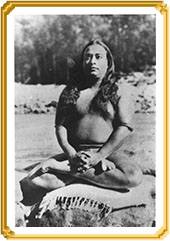 One can observe this trend early on. On the CD Follow the Path Of Christ, Krishna, And The Masters, we hear Yogananda say (Aug. 1951): “Remember, Self-Realization is a combination of the original Christianity of Christ, and original Yoga by the great prophet Krishna, and if you follow them and the Masters, you won’t want anything else, for Self-Realization will take you to your highest goal’s God, our own Beloved!”
One can observe this trend early on. On the CD Follow the Path Of Christ, Krishna, And The Masters, we hear Yogananda say (Aug. 1951): “Remember, Self-Realization is a combination of the original Christianity of Christ, and original Yoga by the great prophet Krishna, and if you follow them and the Masters, you won’t want anything else, for Self-Realization will take you to your highest goal’s God, our own Beloved!”
The SRF Magazine, Sep./Oct. 1952, six months after Yogananda’s passing, published this talk. However his above statement was significantly changed in this way: “You are with the greatest religion in the world, and if you follow it and the Masters, you won’t want anything else, for Self-Realization will take you to your highest goal’s our own Beloved’s God!”
This is a clear sign of the disciples’ direction. It was certainly taken with fervent devotion, loyalty, and good-will, but maybe what prevailed was simply a deep-seated formidable Catholic and Mormon samskara.
Or did these direct disciples perhaps understand and carry out Yogananda’s wishes perfectly well? Who can be certain?
At any rate, for those saintly disciples, devotion to their Master meant protecting, promoting, and developing his organization: “Yogananda’s Self-Realization is his Church, not a universal principle.” One can certainly appreciate where they were coming from.
For them it was obvious: “Could anyone be a true disciple of Yogananda and not be part of the Church he founded?” “Yes,” someone may answer. “I am a Catholic, feel devotion to Yogananda, am inspired to take Kriya, but just feel uncomfortable being so strongly bound to SRF, which is another Church.” Would the Master’s door for that seeker be open, or closed?
A young seeker might say: “Every religious organization has its own distinct personality. I just don’t feel at home with SRF’s formal vibe, but I love Yogananda and have a desire for Kriya Yoga.” What would the spiritual Conqueror answer?
A typical Indian might say: “I am averse to organizations. But Kriya inspires me.” Would Yogananda deny him the initiation, if he shows devotion to him and his Gurus?
The spiritual Conqueror had a far-reaching goal: “May all men come to know that there is a definite, scientific technique of Self-realization for the overcoming of all human misery!”* The question arises naturally: would “all men” ever accept his organization, SRF, as their religion? Would, for example, Mahatma Gandhi* have accepted Kriya initiation from Yogananda, if he had asked him to make SRF his religion? Or Luther Burbank, who said that “all religions of the past, and probably all of the future, will sooner or later become petrified forms”? Or even his own family*?
Yogananda’s enormous task was to spread Kriya Yoga, whose revival was “a fortunate moment for all the human race.”* It is the inner “airplane route”* for the entire world, which will always have countless religious affiliations. Lahiri Mahasaya therefore gave Kriya Yoga, as we said, to members of “every faith”*, as well as to those “of no established faith‘*
In fact, the “liberating yogic technique”* of Kriya is a gift also for the “faithless”, for the atheists on our planet. Yogananda writes about his roommate Dijen Babu during College years in Serampore, who was “often beset by atheistic doubts.” He told him: “Sri Yukteswarji will initiate you into Kriya Yoga. It calms the dualistic turmoil by a divine inner certainty.”* Would Dijen Babu, with his atheistic doubts, ever have joined a Church to get Kriya?
SRF writes on their website: “Paramahansa Yogananda personally initiated 100,000 disciples into the sacred science of Kriya Yoga.” If we count from 1920 to 1952, that means an average of 3125 persons a year: almost 10 a day. His initiations, then, must have been an affair of hundreds. In fact, Swami Kriyananda writes: “Yogananda used to give Kriya Yoga initiations to large groups of people. I was at one initiation in which 600 people participated.”
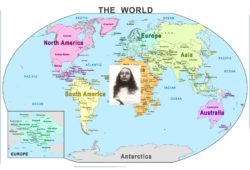 Isn’t this amazing? A clear picture emerges: that of a mighty spiritual Conqueror, determined to spread Kriya Yoga to the millions. Indeed, Mahavatar Babajis’ vision concerned millions. He told Lahiri Mahasaya: “You have been chosen to bring spiritual solace through Kriya Yoga to numerous earnest seekers. The millions who are encumbered by family ties and heavy worldly duties will take new heart from you, a householder like themselves.”*
Isn’t this amazing? A clear picture emerges: that of a mighty spiritual Conqueror, determined to spread Kriya Yoga to the millions. Indeed, Mahavatar Babajis’ vision concerned millions. He told Lahiri Mahasaya: “You have been chosen to bring spiritual solace through Kriya Yoga to numerous earnest seekers. The millions who are encumbered by family ties and heavy worldly duties will take new heart from you, a householder like themselves.”*
And what Yogananda had done – those huge numbers of initiates – was the merest beginning: “The blessed role of Kriya Yoga in the West has hardly more than just begun.”*
But after his passing, did a strong Church-emphasis slow his process down, notably? If so, how could it be speeded up again? Nowadays, it seems that SRF is again emphasizing the free and universal principle of Self-realization, more than the organization, which can only mean future success and expansion. Is the spiritual Conqueror smiling?
At any rate, the beauty is this: everyone, of any Church, or none, can enrol for the precious Praecepta Lessons (as they were called in Yogananda’s time, now “SRF Lessons”). One can hear Yogananda on that same recording from 1951 say: “Every night read a little bit of the Praecepta.” In these lessons his meditation techniques and teachings are available, to all. Nobody needs to renounce his religion, or adopt one.
In his Whispers From Eternity Yogananda expressed his spirit of religious freedom exquisitely:
“Let me be Christian, Jew, Hindu,
Buddhist, Mohammedan, or Sufi:
I care not what my religion, my race,
my creed, or my color be,
if only I can win my way to Thee!
But let me be none of these, if it enmesh me
in labyrinthine ways of religious formalities.
Let me travel the royal road of realization
which leads to Thee.
I care not what bypaths of religion I follow,
if at last I can travel by the one highway of common realization,
which straightway leads to Thee.
The aftermath of his spiritual conquest
Not long after Yogananda left his body in 1952, there was a major yoga boom in America in the ’60s and ’70s. The Beatles played an important role in this. Famous gurus arrived in the West and countless spiritual books began to flood the market. All of them were building on Yogananda’s previous work; all of them were riding the wave Yogananda had created: he had set the groundwork for it all.
Today, yoga has become an enormous movement in America and throughout the Western hemisphere. Meditation, too, is growing strongly: millions of people meditate everywhere in the West. And much of the merit goes to the magnetic, powerful and God-inspired personality of Yogananda, who conquered the West spiritually. He is undoubtedly the father of Yoga in the West.
The ongoing Kriya Yoga mission
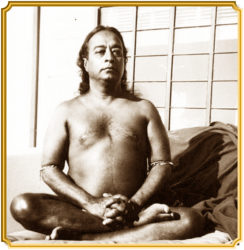 And what happened to his specific Kriya Yoga mission? To keep it strong, Yogananda, the spiritual conqueror, had founded SRF. Rajarsi Janakananda was his successor, but he fell severely sick in August 1952 and left his body three years later. Daya Mata succeeded him in 1955, but had effectively been running SRF already before. She, a nun by nature, shaped the future of SRF, which became ever more monastic, inward, God-devoted, representing the “devotionally sweet” side of Yogananda. The “campaigns” diminished and the monastic silence increased.
And what happened to his specific Kriya Yoga mission? To keep it strong, Yogananda, the spiritual conqueror, had founded SRF. Rajarsi Janakananda was his successor, but he fell severely sick in August 1952 and left his body three years later. Daya Mata succeeded him in 1955, but had effectively been running SRF already before. She, a nun by nature, shaped the future of SRF, which became ever more monastic, inward, God-devoted, representing the “devotionally sweet” side of Yogananda. The “campaigns” diminished and the monastic silence increased.
This situation left a natural vacuum: who would fill the void and represent his “exceptionally powerful” side? Who would carry on the Conqueror’s expansive, creative, tireless drive to spread his message far and wide? This role, it seems, fell to Swami Kriyananda, who had acted as the SRF head monk and SRF vice-President. The Master had told him frequently: “You have a great work to do.” His successor Rajarsi Janakananda reiterated it firmly: “Master has a great work to do through you, Walter, and he will give you the strength to do it.” The Ananda community was born.
Other male disciples also manifested the outward and expansive aspect of their guru, such as Oliver Black, who founded Song of the Morning Ranch; Roy Eugene Davis, who founded the Center of Spiritual Awareness; and Norman Paulsen, who founded the Sunburst community.
And now?
Yogananda came to spiritually uplift not only the West, but also the entire world! He couldn’t have accomplished this mission alone, however, and needed to establish a “spiritual army” all over the globe: souls who were eager to help him spread the powerful teachings of Self-realization. Therefore he wrote the following “World-Appeal”, which he published in March 1926 in his East-West magazine, not long after having established his headquarters at Mount Washington. Here it is:
WORLD APPEAL 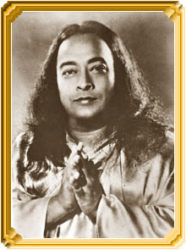
FOR RECRUITING A SPIRITUAL ARMY
by Swami Yogananda
It is noon-time! Dear ones, sleeping yet? The Divine Trumpet is calling!
Everything may seem peaceful and quiet to you, perhaps, because you are asleep, enjoying partial health and prosperity. But wake, watch, listen! Ignorance, disease, poverty, crime, and death, fully equipped with a million missiles of misery, are swarming in hordes to invade our souls, cities, homes, your dear ones. We want recruits, to train themselves first, and others afterward, to fight these universal enemies.
It is not enough to praise God, who is unmoved by human flattery or disbelief. It is the time, in this world, of universal war. He loves God best who serves His children. Our world is in a state of terrible siege, fighting Delusion and its vast army. The cry of the diseased, dying, and mentally wounded rend the air. Our toll is heavier than ever. Only last year, right here in enlightened America, the records of crime show that unknowing youths from the ages of fifteen to thirty stole one billion dollars by hold-ups. Who is responsible? We did not train them how to fight temptation and crime.
Ignorance of right laws of living and health rules is untimely slaughtering the human family at the rate of 305 individuals per second. Disease with its various machine guns has wounded almost 90% of the total population. Death gets almost 100% of our harassed brothers and sisters to a premature grave. Are we immovable, insentient, less even than stones? Rocks, trees, and animals lead a happier and more certain existence than we do. Are we not better equipped, more powerful than anything in Nature? Then why should we suffer at the hands of weaker agencies? Let us seek the remedy.
Let us, forgetting race, creed, dogma, and caste, gather together and make a world-wide united organized attempt to train our fifteen hundred million members of the human family to fight disease, death, misery, and ignorance. We must have Spiritual Military Schools for all-round human training in every city of the globe. One such is started on Mount Washington, Los Angeles. Won’t you enlist? Why spend your finances and energy indirectly to support luxury, crime, and disease, or leave your money behind you without having put it to a good use while living?Join us. Every dollar you give will go to save a soul, to fight the enemies of right living. Let us unite for real liberty and freedom – freedom from bad habits, uncontrolled whims and ignorance. Let us learn to be ruled only by right discrimination.
How many of the world’s millions are healthy? Only 5%. How many are free from poverty? Only 1%. How many die prematurely? Almost 99%. How many have never suffered disease? Less than 1%. How many are spiritual and have a sound scientific spiritual training so that no circumstances could ever overcome them? Less than 1%. What is the cause of this terrible situation? It is because we have slept so long, andlet the army of Ignorance swarm everywhere.
I am not asking for myself, but for the American Spiritual Army Headquarters on Mount Washington, where we are recruiting to start this world fight against our common enemy, Delusion. Come on, join us, donate your energy, good-will, or purse. Do your share, do what you can, that is all we ask of you. Won’t you do something while you are still unscathed? Anything that you do is sincerely welcome. Save a soul from ignorance, and you have saved his body and mind as well. Do good while you are living, and have the fruits of noble actions in this life.
How to join his “spiritual army”
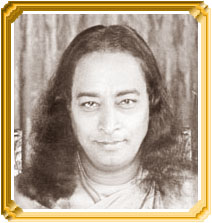 Now, 100 years later, helping hands are more necessary than ever, otherwise his precious mission will stagnate. In fact, today again, perhaps with different wording, he would send out his call for help to all of us. Service is part of discipleship and of love. Yogananda, the spiritual Conqueror, is calling us: “Come and join, and do your share for the mission I have started!”
Now, 100 years later, helping hands are more necessary than ever, otherwise his precious mission will stagnate. In fact, today again, perhaps with different wording, he would send out his call for help to all of us. Service is part of discipleship and of love. Yogananda, the spiritual Conqueror, is calling us: “Come and join, and do your share for the mission I have started!”
But how? How can you heed his urgent appeal? Perhaps you are already connected with an organization dedicated to him. In that case, serve him there, more than ever, with all your heart.
Otherwise, get busy! Yogananda established a movement of Self-realization. It has never been just an inward teaching of meditation and God-communion, but is intended to have a lasting influence on our entire society, on all levels. And again: he can’t do it alone. He needs our hands, feet, hearts, minds and souls.
For example, he spoke about the arts. Are you perhaps an artist, like Amelita Galli Curci and others? Why, then, don’t you follow his teachings, tuning into him, to become his instrument through uplifting art? Maybe you can find other inspired artists who tune into Yogananda, whom you could join? He taught us to affirm: “The ocean of God’s abundance flows through me. I am His child. I am the channel through which all Divine Creative Power flows.” (This and all following affirmations come from his early magazines)
Or are you perhaps a good business man, like Rajarsi Janakananda or Oliver Black? Yogananda can certainly use your ability and support. And maybe there are good projects dedicated to him which you could help finance? He taught us to affirm: “I will strive for business success not only for selfishly making money, but also that I might serve my country and the world well with some worthwhile things.”
Or are you perhaps a teacher? There are schools dedicated to Yogananda which you could join. Education is highly important to Yogananda. You could teach his wisdom to many children, for example: “They can, who think they can. Character is a perfectly educated will. Nothing can resist the will of a man who knows what is true, and wills what is good.”
Perhaps you are talented as a beautiful graphic artist? Certainly he will find a way to make your skill useful for his cause. He taught us to affirm: “Life is the expression of infinite beauty. May this eternal urge of beauty burst forth through the petal of my every action and thought.”
In short: do you have a talent for anything? Why not offer it to Yogananda in some way? Why not find like-minded souls whom you can join in your efforts to serve him? Together we can manifest beauty more easily. Yogananda taught us: “No matter what work I am called upon to perform, I know there is a way to bring beauty and inspiration into it. May I always be alive to beauty and creative inspiration.”
Even more: why don’t you think about living together with these like-minded souls? Communities were a consummate ideal for Yogananda. They can start with just three of four like-minded people. Why not? In this way one can help the other to behold God’s beauty everywhere: “Do not forget when you meet Beauty, beauty of every kind’s the gorgeous color of the sunset, the music of birds, the glistening water, the rustling trees, the soft breeze on your face, the warm sun, the joy of love and friendship – to speak your gratitude to the Father within for surrounding you with so much wonder and beauty and for opening your eyes that you might see and enjoy it.”
Yogananda was a spiritual conqueror. His teachings were called Yogoda in the early years. In his East-West magazine in April 1932, he called all his students to dynamic action:
A MESSAGE TO ALL YOGODA STUDENTS
Dear Ones:
With this new year, make an undying resolution: “To behold the Spirit in the Light of regular practice of the Yogoda Lessons, and to establish a Yogoda temple in every heart.’
So, daily, meditate deeply, at the same time spreading the message. Live Yogoda, talk Yogoda, and spread its good news everywhere. As I received the Lessons from my Master, and you received them from me, so it is your duty to spread your own testimonials about Yogoda everywhere”¦
Yogoda’s need now is for more inspirational apostles, those who feel the Christ-Consciousness within, and who will become real apostles of Self-Realization. From today, strive to become an apostle of Christ-Consciousness, also try to be one of the world’s “Fishers of Souls” with your inspirational words and writings, and with your voice saturated with the Holy Ghost Vibration of “Aum.”
Go on bringing others into the Yogoda path, which is the finding of God through Self-effort, and through meditation in the temple of intuition. Let Yogoda Self-Realization, and Sat-Sanga Universal Fellowship, be your watch-word in your daily life.
Jai Guru!
Victory to his divine dispensation.
